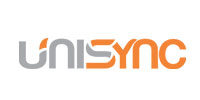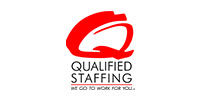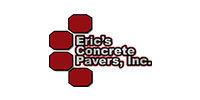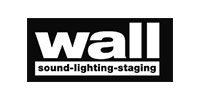
10 Mar A Selling Memorandum
A sellers memorandum includes all those points one would normally expect to see in any business plan, to wit: an executive summary, a business description, financial requirements, target market niche, identification of top management, an operations review, analysis of strengths and weaknesses, and current financial statements and projections.
Guide to Mergers and Acquisitions published by PPC
A proposed sale of a middle-market company almost always begins with a selling memorandum. This document is called many things, including offering memorandum, confidential descriptive memorandum or simply the book. Regardless of what you choose to call it, its purpose is to encourage prospective buyers to take a further look at the company.
For the seller, it has a secondary side benefit. It forces them to take a hard look at the company, its strengths and its weaknesses. Upon reviewing the information necessary to prepare a selling memorandum, the seller may, in fact, decide that it’s not such a bad company after all and elect to keep it. On the other hand, the seller could decide that the current condition of the company needs to be improved before attempting to sell it. Looking at the company through the eyes of a buyer, could also prompt the seller to try to increase the value prior to selling. This may be done, for example, by building a stronger brand loyalty, by entering into employee contracts with key managers, or perhaps by diversifying the customer base.
Assuming, however, that the decision to sell has been made, the importance of the selling memorandum can not be emphasized enough. It is like a strong advertisement for the company and it must tell a good story. It should highlight the positive parts of the company, add value for the buyer, and show the negatives as opportunities. The selling memorandum has to make a good first impression. A seller wants to attract qualified buyers and bring value to the company being sold. This means that the selling memorandum has to be prepared and written by a professional. It is too important a document to do it any other way. It is also the basis of a strong marketing program to attract the best buyer at the best price.
What makes up a strong selling memorandum? It includes quite a few different elements. But, first a few caveats:
- Don’t include confidential company information or reveal trade secrets. Although the document may be intended for qualified buyers only, once it is disseminated it really becomes a public document. Professional intermediaries and investment bankers do make prospective buyers sign a confidentiality agreement, which does help in this area. Still, with copy machines and email services readily available, it never hurts to maintain confidential information until much further in the negotiations.
- Make sure that a prospective buyer knows exactly what you are selling. It is assumed unless otherwise mentioned that it is the entire company that is for sale. You don’t want prospects to think that they can purchase just the most profitable portions of the company. Obviously, a seller wants to show-off the excellent parts of the company, but this should not be done at the expense of the not-so-good parts. These can be presented as excellent opportunities.
- The selling memorandum should not be aimed at the right prospects. If the business requires technical language to best explain it, use it. A buyer, who doesn’t understand it, probably isn’t a buyer.
- There should be an explanation of how the company works so a prospective acquirer can read through the lines about the selling company’s corporate culture. This element can make or break a sale and it’s best to discover it at the outset.
- There is always a tendency to include too much information – don’t. Don’t over-sell. You don’t need to include the names of customers and vendors and the names of all the employees.
- Be sure to also include the blemishes. If there is a pending lawsuit, include. The bad news should be revealed early on – no one likes surprises, especially later in the negotiations.
- And, finally, and probably, most important, the selling memorandum should be easy to read.
Now, what about the various elements of the selling memorandum. Here are the areas that should be covered in it.
Business Profile (or Executive Summary) – This may be the most important element of the selling memorandum. The entire offering should be covered in brief – no more than four-pages, at most. Many are done in one page. Remember, the sole purpose of the business profile is to generate excitement and interest. It is a selling piece! It should include:
- Ownership
- The Business
- Financial highlights
- Products and/or services
- Markets
- The opportunities
- Reason for sale (Why is it for sale?)
This business profile is usually sent to possible purchasers. If the prospect is interested further, they sign a confidentiality agreement before receiving the entire selling memorandum. The selling memorandum includes detailed information on the key elements of the company and usually covers the following:
- Business overview – In other words, who and what is the company? This is the place where everything about the company is summarized: it’s history, the employees (in general), the management team, the locations, any important intangible assets, and the outlook for the business.
- Company strengths – What does the company do well? This should cover those strengths that bring value to this particular company.
- Markets – Who are the customers/clients? What and how does the company sell its products or market its services.
- The Risks – What are they? If there are risks in the business, they should be described and then an explanation of how the company solves them.
- Financial data – Is the company making money? Cash flow statements are important. Current thinking is that the seller doesn’t have to include all of the available financial data – which the prospective buyer will go through all the financial history as the deal moves forward.
The selling memorandum should include any relevant corporate and/or product brochures as attachments. Prior to putting the business on the market, it is important that an outside valuation be performed. However, the price and terms are not usually a part of the selling memorandum – the marketplace will dictate the price. The purpose of the entire selling memorandum is to generate sufficient interest so that a prospective acquirer will make an offer.
Building Value
Prior to putting a company on the market for sale, the question of value has to be addressed. Increasing the value should, in fact, be considered a year, preferably two, prior to sale. Value is based on profitability, cash flow, management and the overall quality of the operation itself. Here are some considerations in building value, whether the business is going to be sold or not.
- Are the company’s pricing policies set too low, creating low margins? Perhaps they were set some time ago in order to boost sales. Now might be a good time to review them to make sure they are in keeping with current market conditions.
- Is the inventory level too high? How about work-in-progress or finished goods? Increasing the turns in inventory can increase cash flow.
- Are you paying too much for raw material? Talk to your vendors and suppliers, you might be able to get some better prices or terms. Take a look at all of the expenses: utilities, telephone, technology, office expenses – it all adds up.
- Are there services that could be outsourced for increased savings?
- Increasing the quality of customer service may entice customers or clients to pay their bill promptly.
- Are all the employees working together to improve the operation and profitability of the company?
These are just a few of the areas that can and should be reviewed. Although profits are important, there is an old expression that cash is king. The time to take a look at the overall company operations is now.
Measuring the Value of a Company
Consider the following important areas of a company. How does your company stack up in these critical areas? If you were to rank them on a 1 to 4 scale, for instance, what would your score be? The higher the score the more valuable the company! They are considered value drivers – in other words, they are important to a prospective buyer.
- Profitability
- Type of business
- History of company and industry
- Business growth
- Customers/Clients
- Market share
- Return on investment
- Quality of financial statements
- Size
- Management
- Terms of sale
For example, in looking at a company’s financial data – are the statements audited or merely compiled? Is the growth of the company slow or is it growing quickly? How about the customer base – is it based on several major ones, or is it spread out over many customers? The time to consider these critical value drivers is now!

































